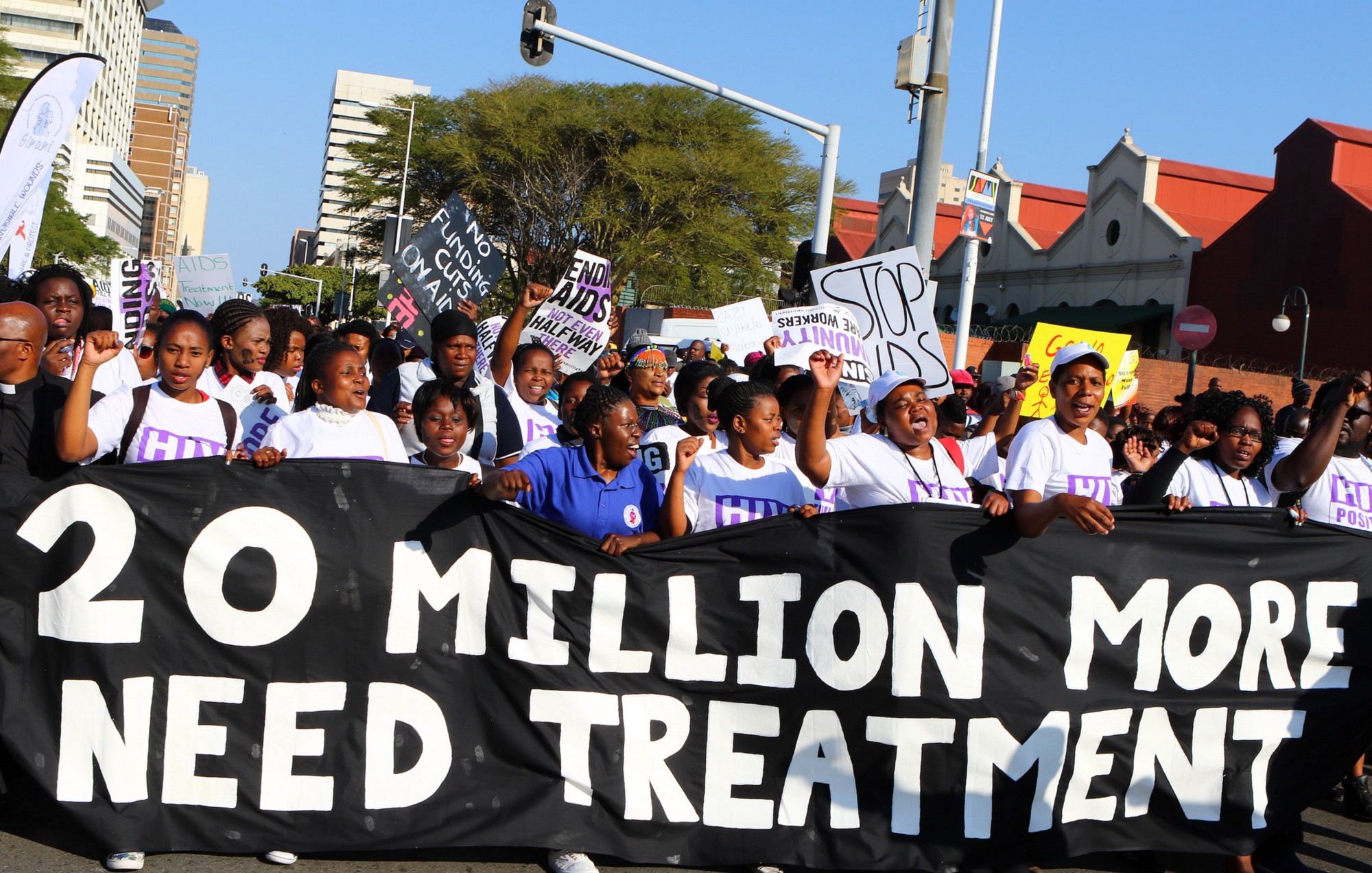
AIDS out of isolation — rights are for everyoneIssues of human rights have been at the centre of the AIDS response from the outset.
Early in the response, people living with or at risk of HIV were denied their right to health because of who they are or what they do — sex workers, people who use drugs, gay men and other men who have sex with men, women and young girls, transgender people — or because of the disease they were affected by. They were denied their right to health services, their right to medicines, their right to protect themselves from infection. In being denied these rights, they were also denied their right to dignity, their right to a voice, their right to justice and their ability to live happy and fulfilling lives.
Rather than standing by and allowing increasing numbers of people to be denied services and dignity, the AIDS response utilized the power of health and human rights frameworks to leverage change. The AIDS response positioned the demand for access to HIV treatment as a right to health, showing that health services are not a privilege for the few but rather the right of everyone, regardless of their HIV status. Activists used laws and the courts to protect individual rights — when sex workers were being criminalized for carrying condoms, they took cases to court to defend the right of women to protect their own health. Communities of people living with HIV and people affected by HIV became very skilled at knowing and using the law to defend and protect themselves. Groups of people living with HIV were able to use the knowledge of their rights and the law to argue for access to new medicines. The success of the AIDS response established a path for people living with other conditions, such as diabetes, tuberculosis, hepatitis or cervical cancer, to raise their voices and demand services and
treatment.
People living with or affected HIV have led the way in demonstrating the power of the right to health, but also the power of health to realize wider rights. In seeking and securing access to justice in the courts and creating the space to make their voices heard in political and scientific forums, people living with and affected by HIV have also able to realize their right to fair
treatment and their right to participate and contribute to their communities and society. People living with HIV demanded their right to work in a safe and non-discriminatory environment, to earn a decent wage and to contribute to the economy. Building on the foundation established by HIV rights-based arguments, people living with disabilities, migrants and people affected by
tuberculosis have been able to make progress in realizing their rights.
Today, a young woman may be focused on her right to a quality education and her right to seek the information and means to protect herself from HIV, sexually transmitted infections and pregnancy. However, her focus is not just on her current needs, but also on enabling her longer-term hopes and aspirations. Her immediate ability to realize her right to education and health
has consequences for her longer-term capacity to realize her right to decent work, her right to form her own opinions and the safety to express them publicly, and when and if she chooses, her right to get married and start her own family.
Similarly, an older man living with HIV will focus on his right to quality health services. In addition to his antiretroviral therapy, he will also have concerns about ensuring that he is able to benefit from the highest attainable standards of treatment and care for older people. He may need services and treatment for hypertension and diabetes. As he is getting older and is not able to work or earn money to pay for food and housing, he will be concerned about his right to be treated with dignity and respect and to be protected from discrimination in his old age. He will be focused on ensuring that his right to safety and security is fulfilled.
People living with or affected by HIV are first and foremost people, with busy and diverse lives and needs. Like all people, their lives change and evolve throughout their life, and with those changes come evolving needs that focus on different aspects of the right to health.
Read more in UNAIDS’ new report Right to Health.
WHAT IS PANCAP?
PANCAP is a Caribbean regional partnership of governments, regional civil society organisations, regional institutions and organisations, bilateral and multilateral agencies and contributing donor partners established on 14 February 2001. PANCAP provides a structured and unified approach to the Caribbean’s response to the HIV epidemic, and coordinates the response through the Caribbean Regional Strategic Framework on HIV and AIDS to maximise efficient use of resources and increase impact, mobilise resources and build the capacity of partners.
What are the Global AIDS Strategy 2021–2026 targets and commitments?
If targets and commitments in the strategy are achieved:
- The number of people who newly acquire HIV will decrease from 1.7 million in 2019 to less than 370 000 by 2025
- The number of people dying from AIDS-related illnesses will decrease from 690 000 in 2019 to less than 250 000 in 2025.
- The goal of eliminating new HIV infections among children will see the number of new HIV infections drop from 150,000 in 2019 to less than 22,000 in 2025.
What are the 95-95-95 Targets for ending AIDS?
- 95% of People Living with HIV know their HIV status;
- 95% of people who know their status on treatment; and
- 95% of people on treatment with suppressed viral loads.
HELPFUL LINKS:
Global AIDS Strategy 2021–2026, End Inequalities, End AIDS
https://pancap.org/pancap-documents/global-aids-strategy-2021-2026-end-inequalities-end-aids/
Caribbean Regional Strategic Framework on HIV and AIDS (CRSF) 2019-2025
https://pancap.org/pancap-documents/caribbean-regional-strategic-framework-2019-2025/
